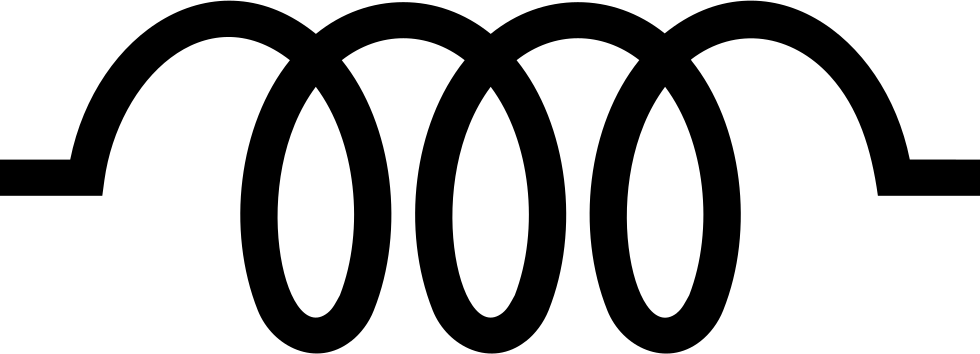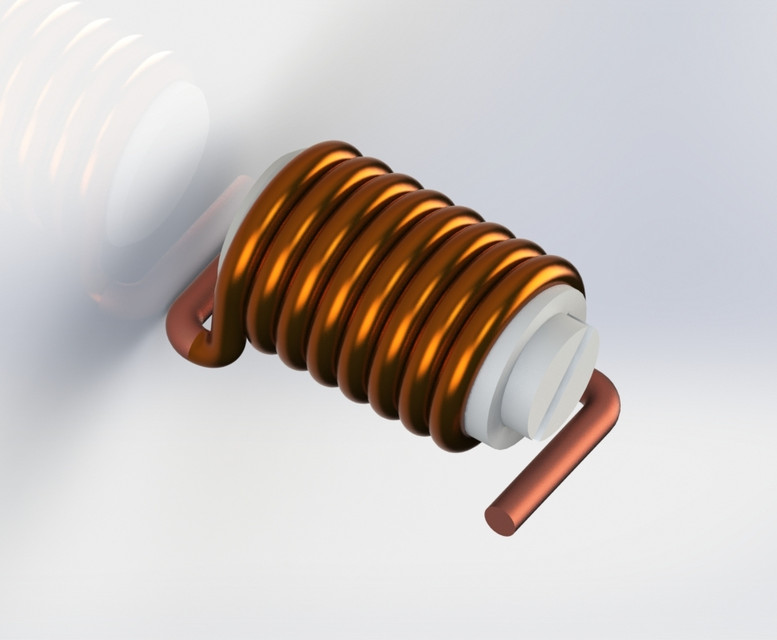Inductor
An inductor is an electronic component that stores energy in a magnetic field when an electrical current flows through it. It is also known as a coil or reactor. Inductors are widely used in electronic circuits, especially in power supplies, filters, and oscillators.
They are also widely used in power transmission, and other electrical applications where energy storage or filtering is required.
Inductors are often used in combination with capacitors in resonant circuits, where they can be used to selectively amplify or attenuate specific frequencies of electrical signals. Inductors can also be used in transformers, where they are used to transfer energy between circuits by inducing a voltage in a secondary coil through a changing magnetic field.
The symbol for an inductor in an electrical circuit is a coil of wire with two or more terminals, as shown in the diagram below:

Construction and Working Principle:
Inductors are made by winding a conducting wire, typically copper, around a core made of a magnetic material such as iron or ferrite. The wire is wound into a coil, and the number of turns in the coil determines the inductance value of the inductor. The core material is chosen to enhance the magnetic field generated by the current flowing through the coil.

When a current flows through the coil, a magnetic field is generated around it. The magnetic field lines link with each other and the core material, creating a closed loop. The strength of the magnetic field is proportional to the current flowing through the coil and the number of turns in the coil. The inductance value of an inductor is measured in henries (H), and it is a measure of how much magnetic flux is generated per unit of current.
Inductors resist changes in the current flowing through them. When the current is increased or decreased, the magnetic field around the coil changes. This change in magnetic field induces a voltage in the coil, which opposes the change in current. This phenomenon is known as inductance. The inductance of an inductor can be calculated using the following formula:
L = N^2 * µ * A / l
where L is the inductance in henries, N is the number of turns in the coil, µ is the permeability of the core material, A is the cross-sectional area of the core, and l is the length of the core.
Applications:
Inductors are used in a variety of electronic circuits. Some common applications include:
- Power Supplies: Inductors are used in power supplies to filter out AC ripple and provide a smooth DC output voltage.
- Filters: Inductors are used in filters to block or pass certain frequencies.
- Oscillators: Inductors are used in oscillator circuits to generate a sinusoidal waveform.
- Transformers: Inductors are used in transformers to transfer energy from one circuit to another.
- Chokes: Inductors are used in chokes to limit the flow of current in a circuit.
Types of Inductors:
There are several types of inductors, including:
- Air Core Inductors: These inductors have a core made of air or a non-magnetic material.
- Iron Core Inductors: These inductors have a core made of iron or a ferromagnetic material.
- Toroidal Inductors: These inductors have a doughnut-shaped core.
- Multilayer Inductors: These inductors have multiple layers of wire wound around a core.
- RF Inductors: These inductors are designed for use in high-frequency circuits.
Illustration and Diagrams:
The following illustration shows a basic inductor:

The inductor consists of a coil of wire wound around a core. When a current flows through the coil, a magnetic field is generated around it.
The following diagram shows a typical application of an inductor in a power supply circuit:

In this circuit, the inductor is used to filter out AC ripple from the rectified AC voltage and provide a smooth DC output voltage.
Overall, inductors are an essential component in electronic circuits and have a